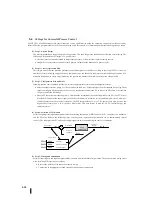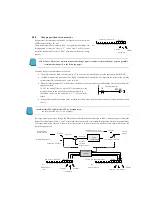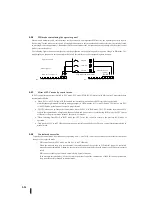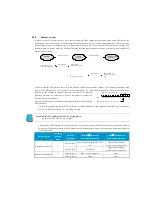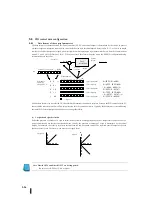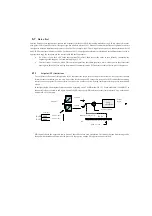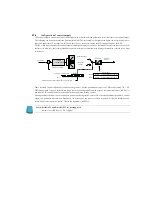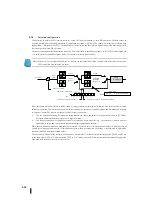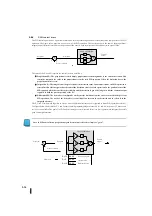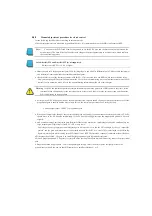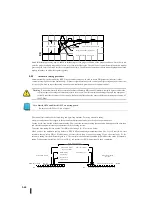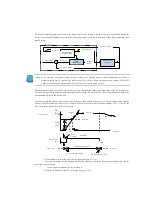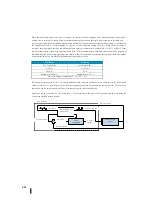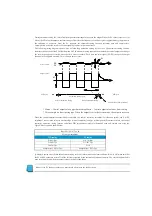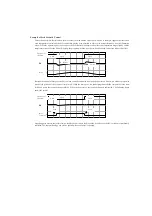
5-32
5-8-1
Position algorithm
When the position algorithm is selected, the PID formula computes the control output Mn.
The total and initial outputs of the integral term of the above formula are collectively referred to as the "bias" term (Mx). This
bias term is used to define bias and control output as a function of sampling time.
Here are the variables in the position algorithm and their associated variables:
Ts
= Sampling-period
Kc = Proportional gain
Ki
= Kc *(Ts/Ti) coefficient of integration term
Kr
= Kc *(Td/Ts) derivative factor
Ti
= Reset time (integration time)
Td = Rate time (differential time)
SPn = Set point of the sampling time (SP value)
PVn = Sampling time (PV) process variables
En = SPn-PVn = deviation of sampling time
M0 = Control output of the sampling time
Mn = Control output of the sampling time
These equations are found in most text in process controls. At first glance, you can partially divide the PID position algorithm
corresponding to P, I and D terms and biases, as shown below.
The initial output is the output value assumed from manual mode control when control is changed to automatic mode. The sum
of the initial output and integration conditions is biased, and the term holds the "position" of the output. Therefore, the velocity
algorithm described below does not have a bias component.
5-8-2
Speed algorithm
The speed algorithm form of the PID expression is obtained by subtracting (n-1) from the n-th equation of the position
algorithm.
The variables in the velocity algorithm and their associated variables are as follows:
Ts
= Sampling-period
Kc = Proportional gain
Ki
= Kc *(Ts/Ti) = coefficient of integration term
Kr
= Kc *(Td/Ts) = coefficient of the derivative
Ti
= Reset time (integration time)
Td = Rate time (differential time)
SPn = Set point of the sampling time (SP value)
PVn = Sampling time (PV) process variables
En = SPn-PVn = deviation of sampling time
Mn = Control output of the sampling time
As a result, the speed algorithm form for the PID formula is as follows:
M
n
=
K
c
*
(e
n
–
e
n
–1
)
+ K
i
* e
n
+ K
r
* (e
n
– 2*e
n
–1
+e
n
–2
)
M
n
=
M
n
–
M
n
–1
M
n
=
K
c
*
e
n
+
K
r
* (e
n
– e
n
–1
) + Mx
n
.....
Output for sampling time
“n”
Mx
o
=M
o
Mx
n
=K
i
* e
n
+ Mx
n
–1
M
n
=
K
i
*
e
i
+ M
o
i=1
n
サンプリング時間「
n
」時の出力
M
n
=
K
c
*
e
n
+
K
i
*
e
i
+ K
r
* (e
n
– e
n
–1
) + M
o
i=1
n
Output when sampling time is ’n’
Summary of Contents for Kostac SJ-Ether Series
Page 1: ...English version of the KOSTAC SJ Ether series user s manual SJ ETHER USER M...
Page 12: ......
Page 13: ...1...
Page 14: ......
Page 88: ......
Page 89: ......
Page 113: ...3 24 Note Refer to 6 3 3 Module Assembly for connections and locks between modules...
Page 153: ......
Page 156: ...flashing OFF Not sent H W RX Green flashing Receiving H W OFF Not received H W...
Page 161: ...4 8...
Page 221: ......
Page 310: ...Chapter 7 Maintenance...
Page 311: ......

